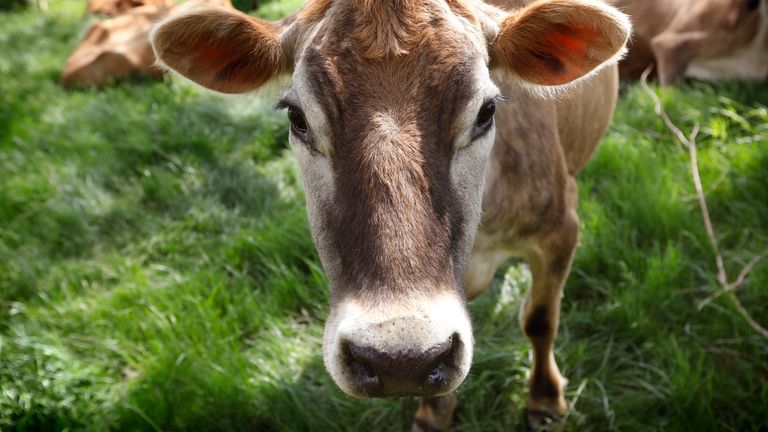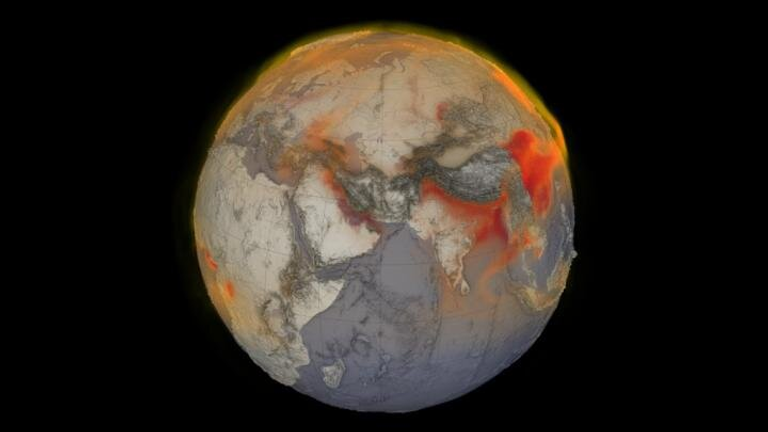
A Norwegian technology company has invented a way to stop slurry (the fertilising mixture of manure, hay and water) emitting so much methane – by zapping it with artificial lightning.
Oslo-based N2 Applies is testing its plasma technology across Europe, including at three farms in Britain, for the safety both of farm workers and the planet.
“In essence, we’re harnessing lightning to zap livestock slurry and lock in harmful emissions,” N2’s Chris Puttick told Reuters at a test farm in Buckinghamshire.
According to NASA, cow burps emit far more methane than the slurry created from their manure in specialised – and potentially deadly – slurry pits and lagoons.
Farm worker fatalities are often linked to these pits. Back in 2014 an eight-year-old boy died in Northern Ireland after being overcome by toxic fumes – including ammonia and methane – from a slurry tank on his farm.
The new technology from N2, which is machine housed in a standard-sized shipping container, is being used to treat these slurry pits so that they can continue producing fertiliser but without posing a risk to either farmers or the planet.
The machine uses nitrogen from the air and a 50kw plasma torch to “lock in” the emissions, Mr Puttick explained.
“When we add nitrogen from air to the slurry, it changes the environment to stop methanogenesis basically.
“So it drops the Ph down to just below six and we’re catching that early. So it stops the breakdown of those methane microbes that then release the gas to the air,” he said.
After being processed the machine itself excretes an odourless brown liquid, called NEO – a Nitrogen Enriched Organic fertiliser – which N2 says contains double the nitrogen content of regular nitrogen fertilisers, which are used to boost crop production.
Mr Puttick told Reuters that independent tests showed their technology reduces methane emissions from slurry by 99% and also cuts by 95% the emission of ammonia, something the EU has described as one of the main sources of air pollution.
On the 200-cow dairy farm the machine is being used on in Buckinghamshire, this was equivalent to “a reduction of 199 tons of carbon equivalent every year”, added Mr Puttick.
N2 hopes to release a commercial model of the device in June next year, which should cost approximately the same as a medium-sized tractor.
The amount of methane in the atmosphere grew massively between 2000 and 2017, leading to what researchers believe could be a global warming increase of up to four degrees Celsius by the end of the century.
In 2017, the Earth’s atmosphere absorbed nearly 600 million tons of the gas – which is 28 times more powerful than carbon dioxide at trapping heat over a 100-year span.
:: Subscribe to ClimateCast on Spotify, Apple Podcasts, or Spreaker
Cattle are a massive contributor to global methane emissions, accounting for 227 million tons of the gas in 2017, compared to 108 million tons from fossil fuel production and use.
So much so that fast food companies such as Burger King are tweaking the diet of their cattle, introducing lemongrass in the hopes of reducing emissions.
At the COP26 summit in Glasgow this year, more than 100 countries signed up to the Global Methane Pledge to reduce methane emissions by 30% by 2030.
Methane reportedly has a higher heat-trapping potential than CO2 but it breaks down in the atmosphere faster, meaning deep cuts in methane emissions by 2030 could have a rapid impact on slowing global warming.








More Stories
5 Reasons Why Everyone Should Look Forward to Save Earth Mission’s Takeoff Event
Save Earth Mission’s Takeoff Event Countdown Starts: Get Ready to Witness History
The Save Earth Mission: A Global Movement Towards a Sustainable Future